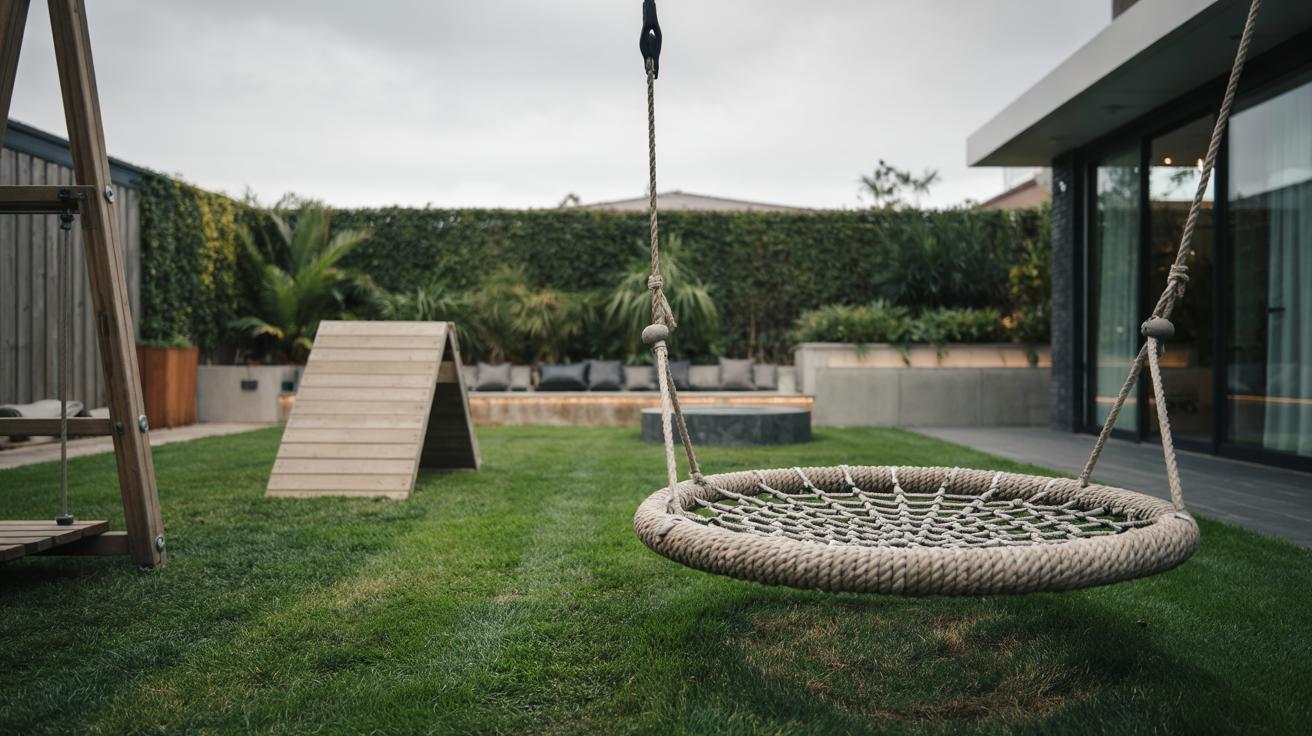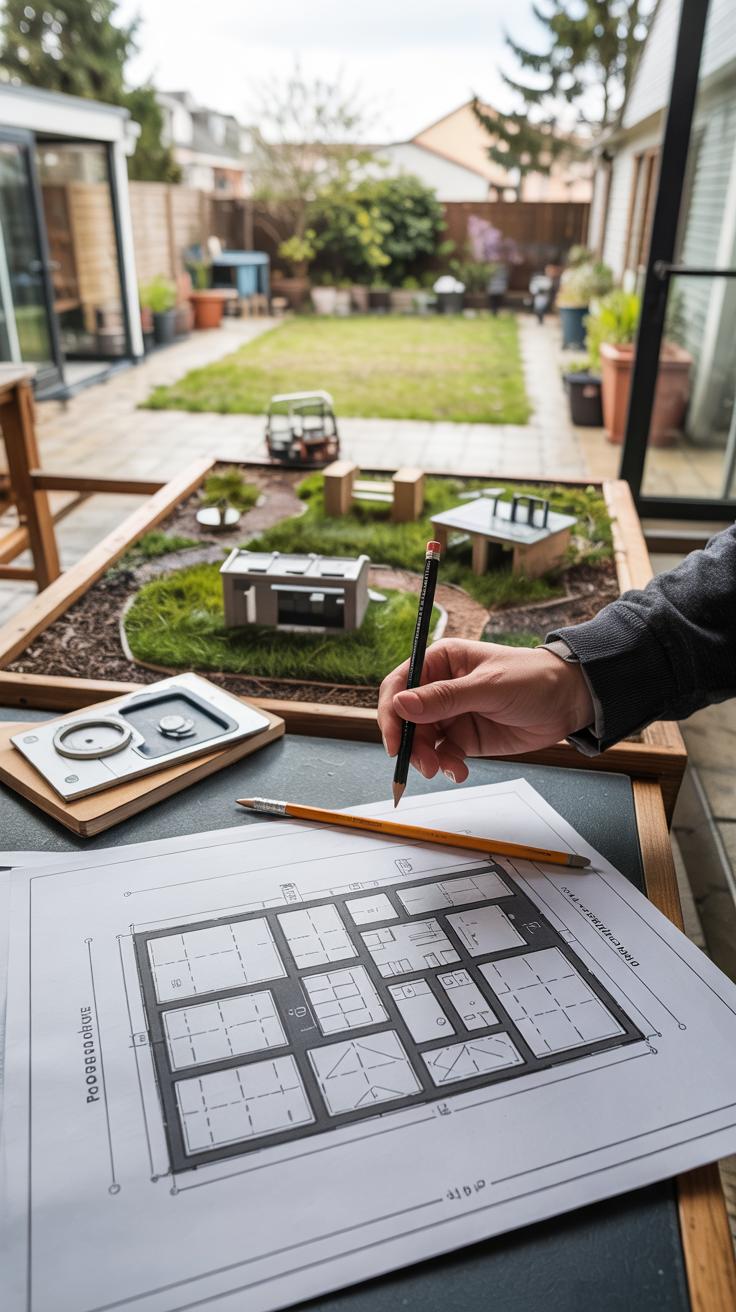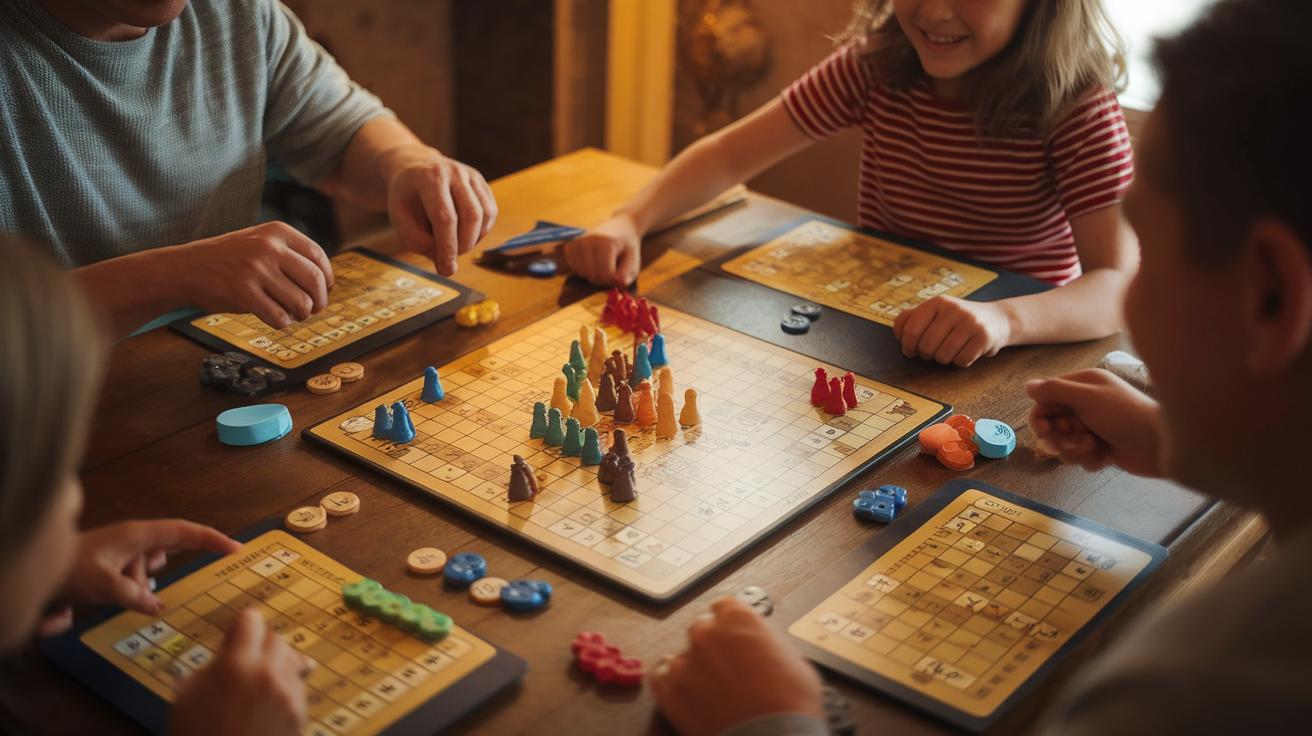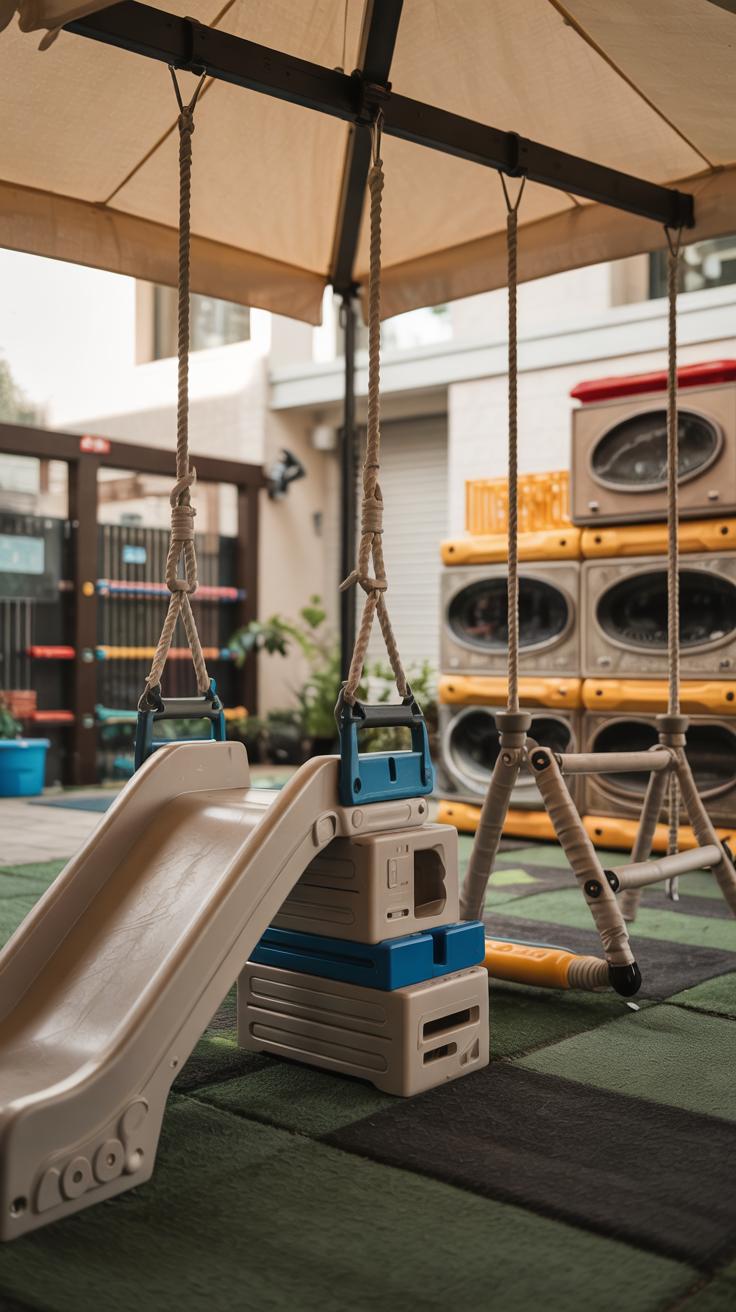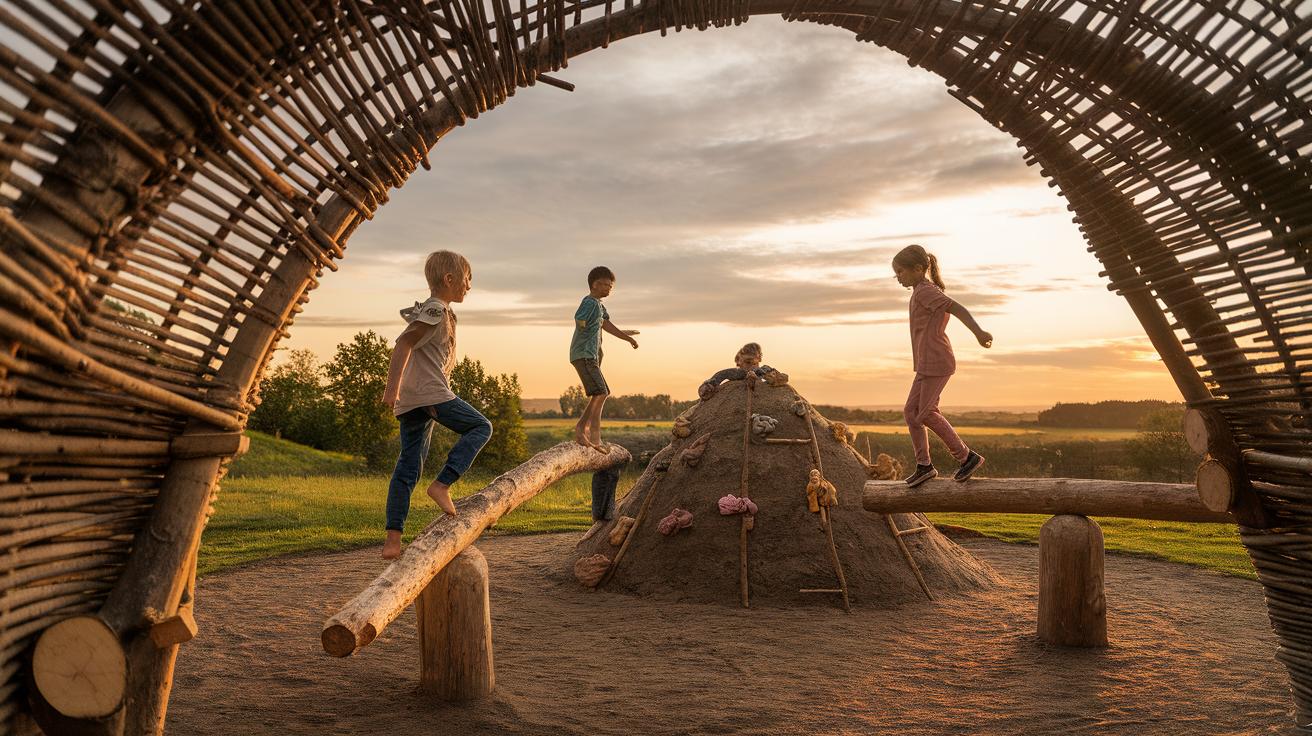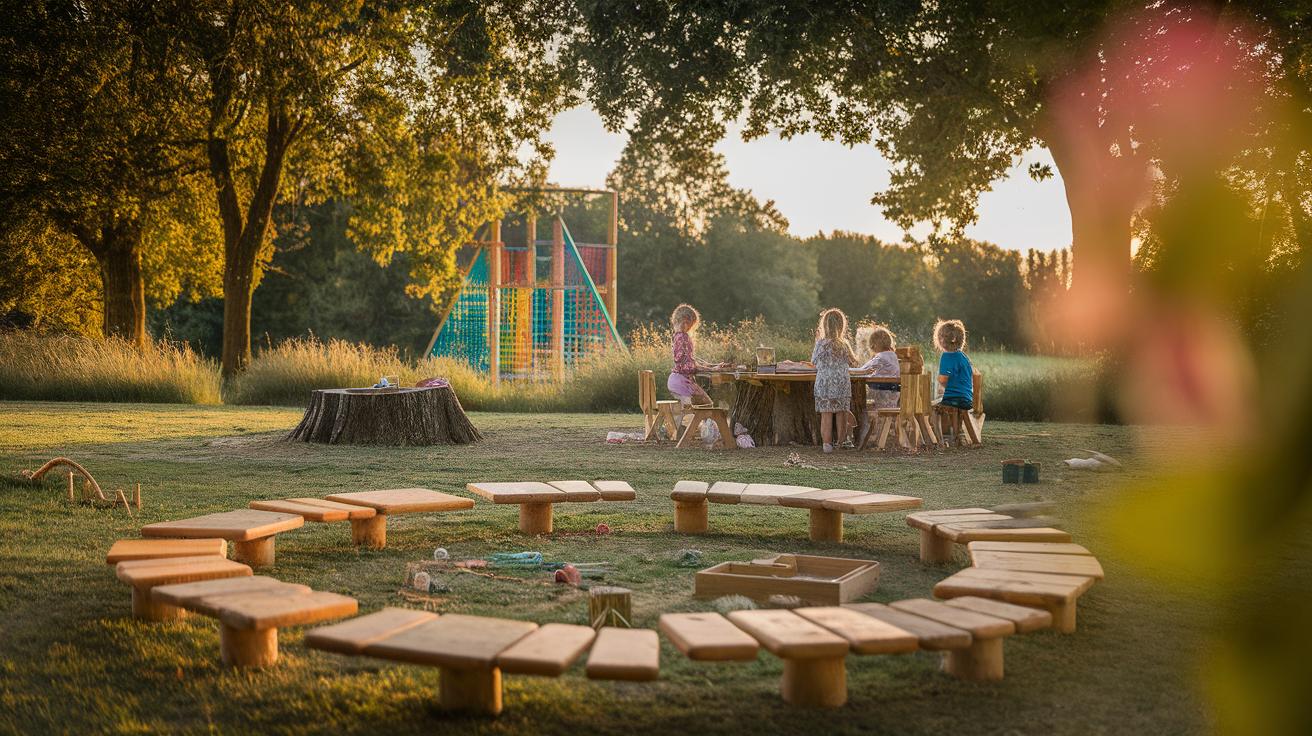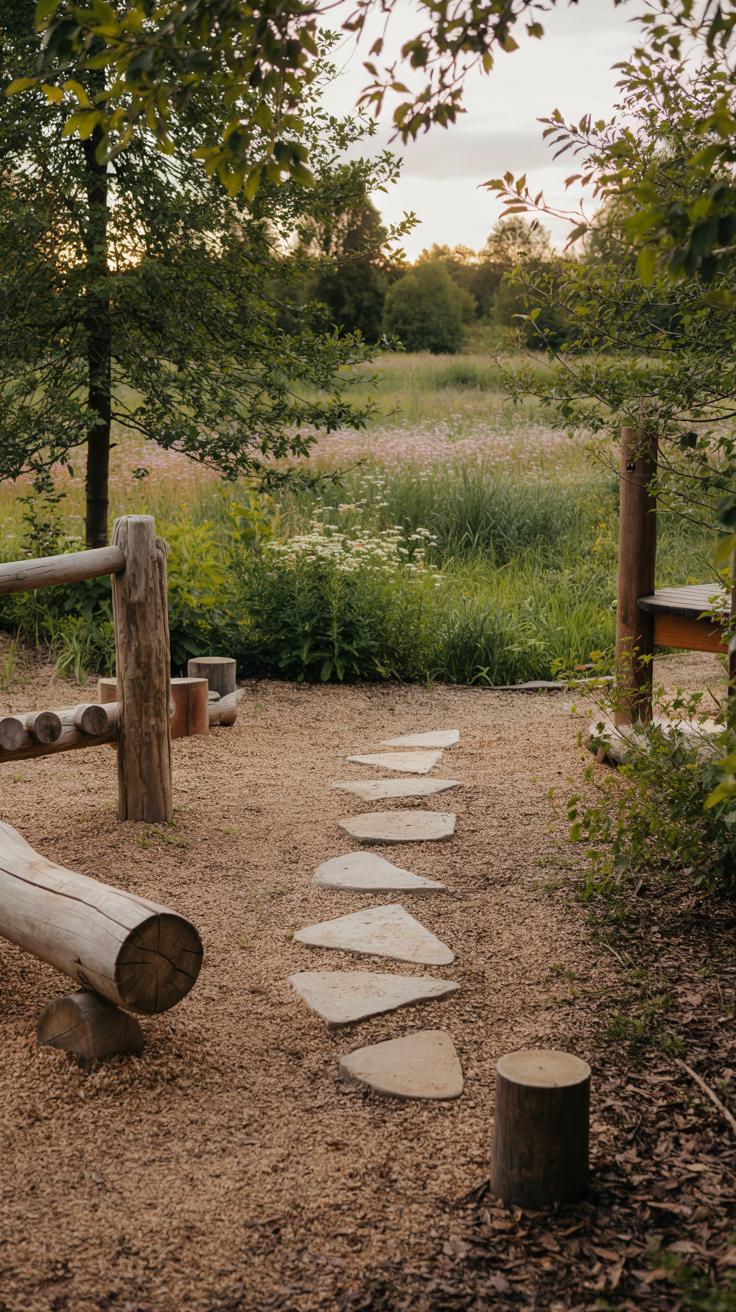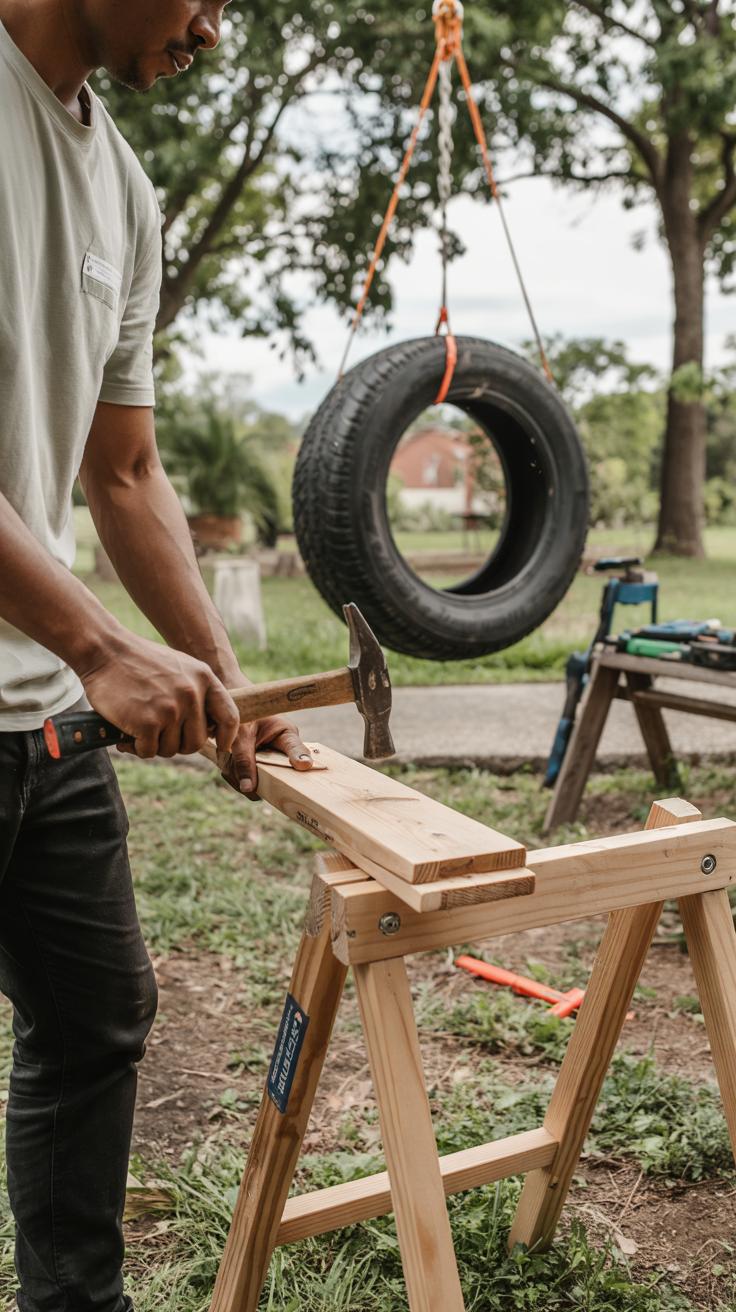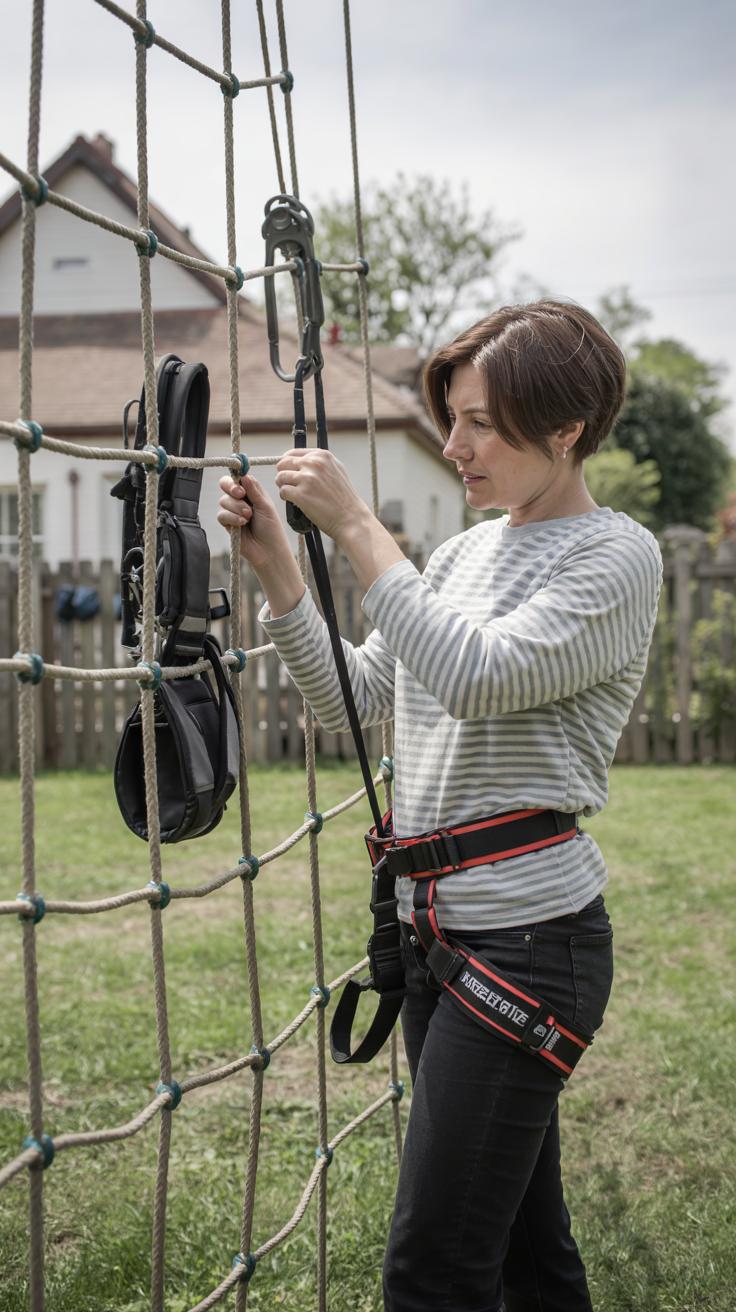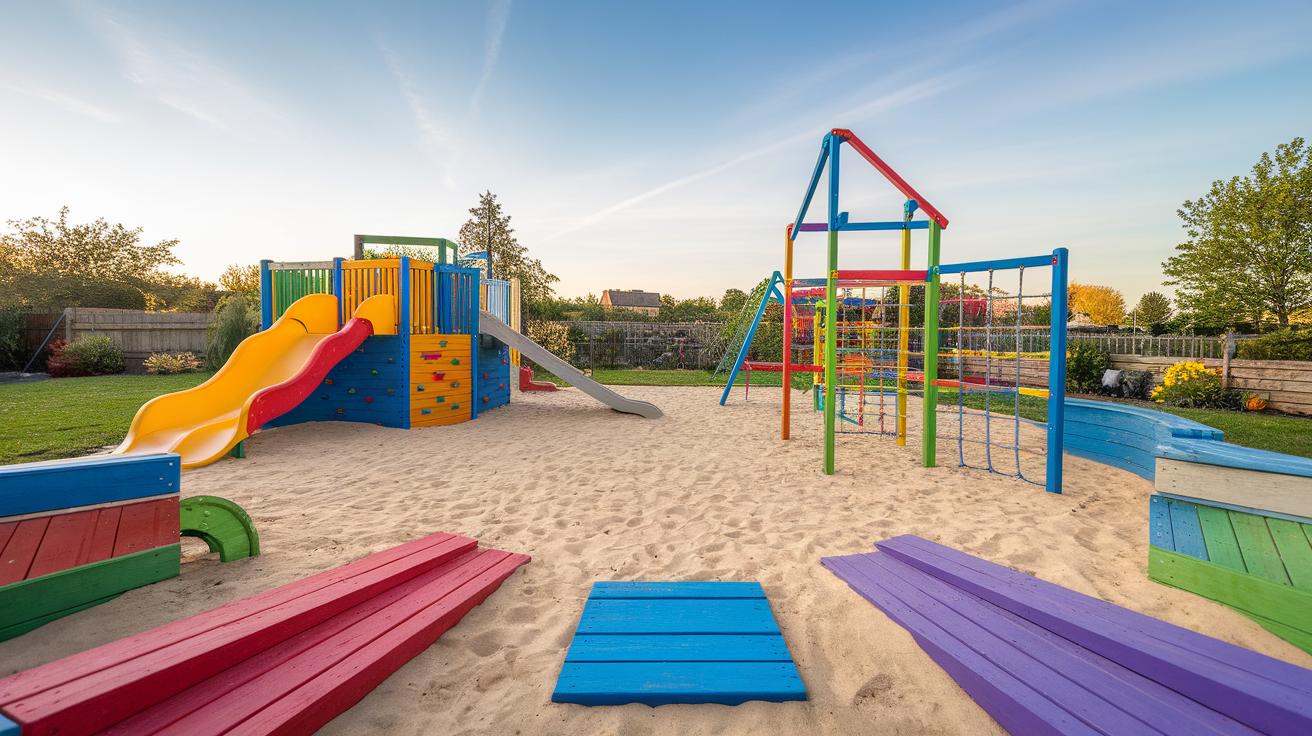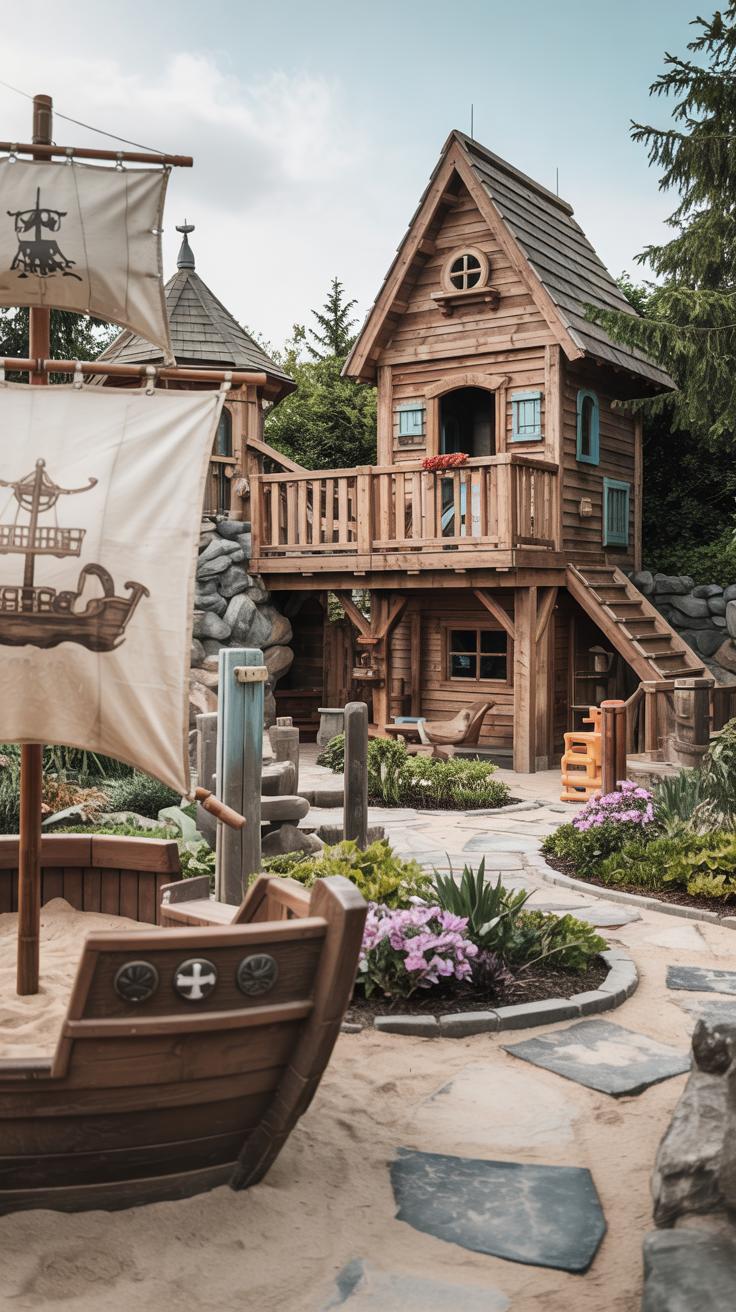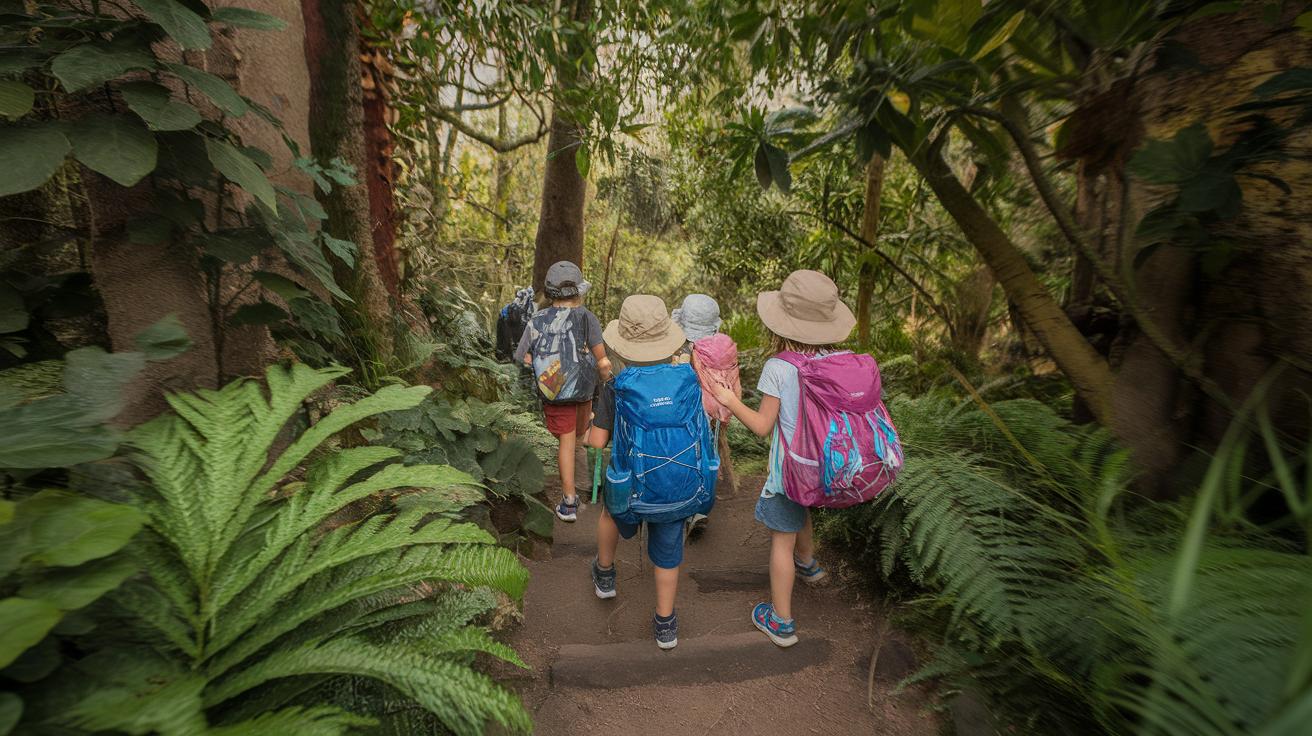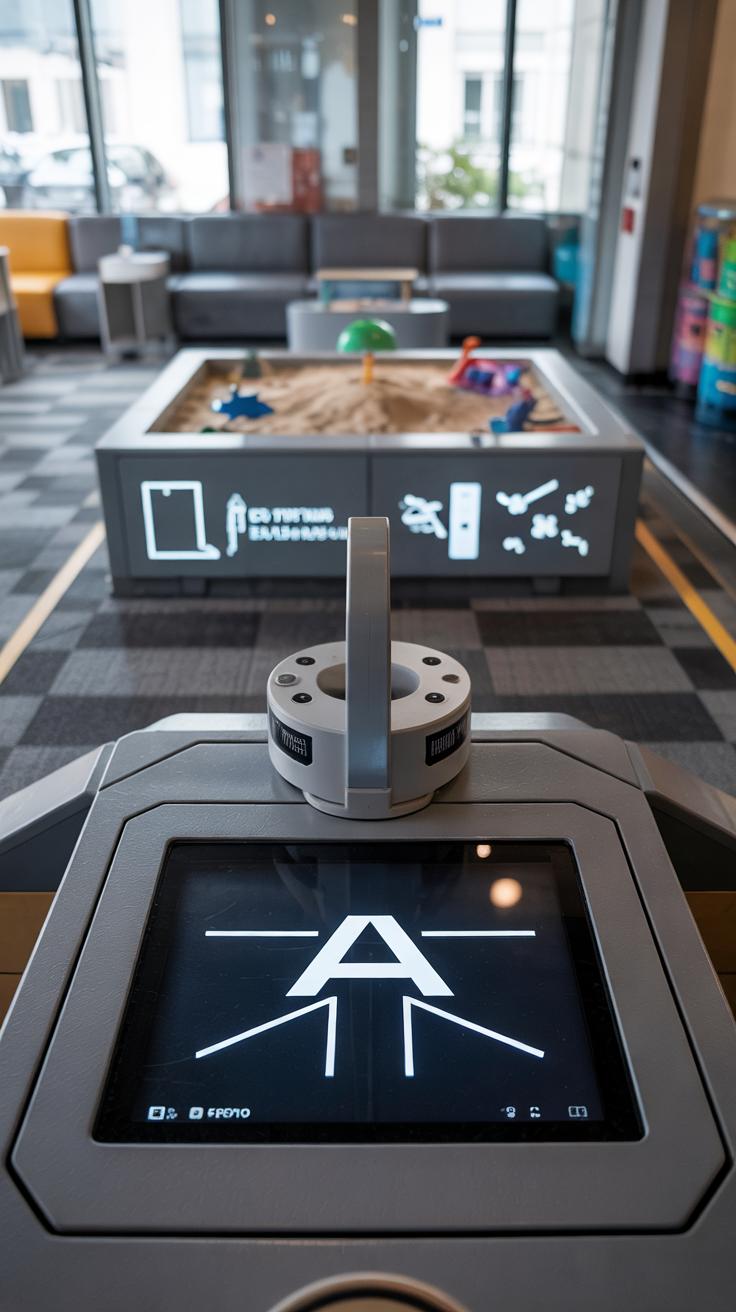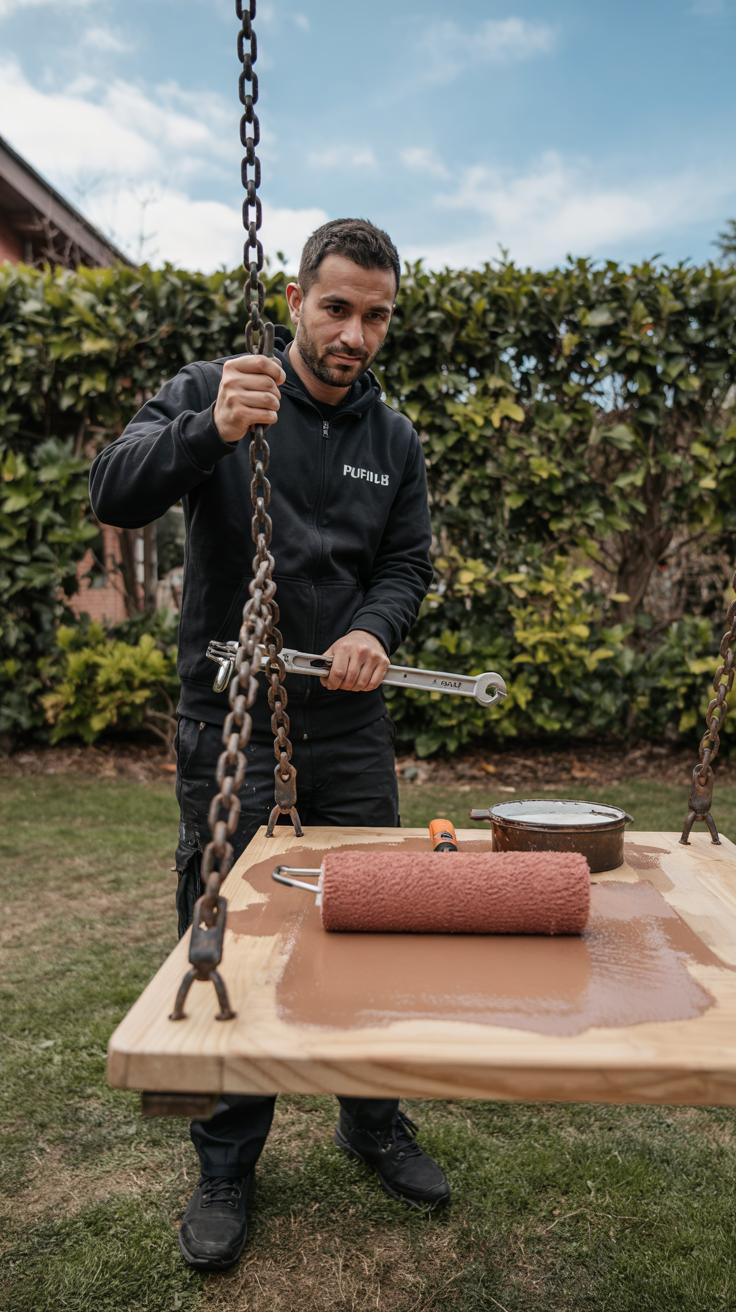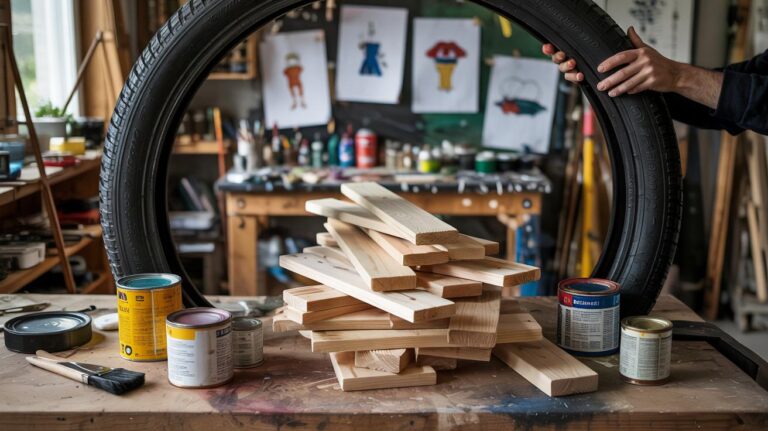Introduction
Empty backyards offer a great opportunity to create a playground that can be both fun and beneficial for children. Many playgrounds around the world provide diverse equipment that helps children build physical skills and support their social and emotional growth. However, if you have a small or awkwardly shaped backyard, you might wonder how to make the most of the space for a children’s play area. This article shares practical and innovative ideas to inspire you to design a backyard playground tailored to your specific space and needs.
Consider what elements excite your children. Think about combining equipment such as swings, slides, climbing structures, or sandboxes with natural playground elements. You do not need a large area to create a stimulating play environment. Using creativity, you can design a space that inspires active play and helps develop coordination, strength, and imagination. Would you like to turn your empty backyard into a lively spot that children will enjoy for hours? We explore how to achieve this with smart planning and innovative concepts.
Planning Your Backyard Playground
Understanding your backyard space helps you create a playground that fits well and stays safe. Begin by measuring the entire area, noting its length and width in feet or meters. Sketch a simple map to mark trees, fences, and pathways. Consider how the sun moves across your yard to find shaded spots for play during hot days. Check the ground for slopes or uneven terrain that could affect equipment placement or safety.
Think about the children who will use the playground. How old are they? What do they enjoy? Younger kids may need swings or small slides, while older children might prefer climbing walls or balance beams. Prioritize equipment that suits their interests and development stages to keep them engaged. Setting a clear budget helps avoid overspending. Decide what features are essential and which ones can wait for future upgrades.
Assessing the Space
Start by measuring your backyard’s length and width using a tape measure or measuring wheel. Record dimensions in a notebook or on your phone. Look for flat and open areas that can safely hold play equipment. Undesirable spots include places with thick bushes, roots, or rocks.
Notice which parts of the yard get direct sunlight most of the day and which stay shaded. Kids need both sun and shade for comfortable play. Check accessibility near your house or driveway to make supervision easier. Avoid placing equipment where it’s hard to see or reach. Consider drainage as well; areas that collect water can turn muddy, causing slips and damage.
Setting Priorities and Budget
List playground features you want, then rank them by importance. Is a swing set a must-have, or can it wait? Do you want a sandpit or a climbing wall first? Fixing priorities helps channel funds to the most valued items. Establish a clear budget limit before you start buying anything.
Divide spending between essential safety features, main equipment, and optional extras. For example, allocate money to install soft ground cover and secure fencing before buying elaborate playsets. Look for quality products that last instead of cheaper items that may break. Plan for future additions to add variety without overwhelming your initial budget.
Choosing Play Equipment for Small Spaces
Finding play equipment that fits your backyard’s size and shape requires careful choices. Focus on gear that offers plenty of fun while using minimal space. Swings attached to an existing structure or a compact frame can fit tight areas without crowding. Slides that curve beside a climbing section take up less room than standalone slides. Climbers designed with multiple grip points and foot supports create varied challenges but keep the footprint small. Think about equipment that encourages different types of play—climbing, sliding, swinging—in a compact setup.
Ask yourself which equipment your children will use most often and what fits your backyard layout. Can a swing share space with a small running path? Could a slide be placed over a sandbox? Choosing equipment that fits your space means kids get more reliable playtime without overcrowding your yard. Well-chosen pieces build fun zones where kids stay active, explore, and return often.
Compact and Multifunctional Playsets
Playsets serving multiple functions make the most of limited spaces. Equipment that combines slides with climbers or ladders lets kids switch activities without moving far. For example, a playset with a small slide attached to a climbing dome saves space and adds extra fun. Other sets offer built-in swings, a climbing net, and a small platform in one compact frame.
Multifunctional playsets reduce the need for many separate pieces, freeing ground area for running or games. You can find sets that convert from playhouse to fort or ladder to crawl tunnel. These flexible designs keep children engaged and let your backyard feel roomy. When space matters, equipment with several use options offers more play value per square foot.
Vertical Play Structures
Using vertical space is a smart way to keep the ground clear. Climbing walls attached to fences or shed walls provide physical challenge without spreading far outward. Rope ladders hung from sturdy beams invite climbing fun while leaving room below for other activities. Vertical tunnels or nets let children move up and down in small footprints. You could add monkey bars above sand or grass, turning airspace into a playground zone.
Installing these elements encourages different muscles and balance skills. Are walls or fences strong enough to support climbing features? Can you arrange vertical pieces near each other to create a mini climbing course? Switching focus to height adds dimension to your playground and keeps the ground less crowded, making your backyard safer and more playful.
Incorporating Natural Elements in Playgrounds
You can transform your empty backyard into a space where children connect with nature through play. Using natural elements like logs, rocks, and plants adds texture and variety that plastic or metal structures often lack. Kids find different shapes to climb on, balance across, or hide behind. These features encourage exploration beyond simple slides or swings.
Logs set in a circle can become a storytelling spot or a base for balancing games. Smooth rocks can serve as stepping stones that challenge coordination, while plants provide sensory experiences like touching leaves or smelling flowers. Children’s imaginations engage more deeply when the environment feels alive and changeable. What might a simple tree stump become if you let a child decide?
Integrating natural elements invites children to use their creativity while also promoting physical activity. You will create a play area that encourages learning through discovery in your own backyard.
Using Natural Materials
Wood, stone, and sand fit well with nature-focused playgrounds and can be included safely. Choose untreated wood with smooth edges for climbing beams or seats to avoid splinters. Large flat stones make excellent stepping pads or seating areas if they don’t slide. Sand pits invite digging, building, and sensory play while softening falls.
Safety comes first. Ensure rocks are stable and wood is free of nails or sharp points. Avoid small pebbles as they can be choking hazards for younger children. When placing natural materials, think about how kids will use them and plan for easy supervision.
Combining these materials balances hard and soft surfaces, providing varied play options. Could you add a sand corner near a wooden climbing frame? Your children might enjoy the texture change and different ways to play.
Creating a Nature-themed Playground
Designing a backyard with a nature theme encourages kids to ask questions while they play. Consider themed gardens, such as butterfly or herb gardens, that teach about plants and insects. Paths lined with logs or stone markers can guide children through a natural obstacle course, combining physical challenge with nature study.
An obstacle course could include stepping stones, balance beams made from logs, and tunnels woven through bushes. This setup invites children to move their bodies and observe their surroundings at the same time. You might also create a small pond area to attract birds or frogs, turning playtime into an outdoor classroom.
How can you use your backyard’s natural contours for games? Using what you have saves space and costs while building curiosity and fun. A nature-themed playground turns your yard into an adventure spot that grows with your children’s interests.
DIY Playground Projects for Your Backyard
Easy-to-Build Equipment
Creating playground equipment at home saves money and adds a personal touch to your backyard. For a tire swing, you need a sturdy tire, strong rope, a heavy-duty eye bolt, drill, and a secure tree branch or a frame. Drill holes evenly around the tire. Thread the rope through these holes and tie knots underneath the tire for support. Attach the eye bolt to the tree branch or frame, then tie the rope securely.
Building a sandbox requires untreated wood planks or old pallets, a tarp, sand, and screws. Construct a simple box frame, place the tarp at the bottom, then fill with sand. A balance beam can be made from a long, thick wooden board placed on concrete blocks or logs for stability. All these materials cost little and are easy to handle with basic tools.
Engaging the Family in Construction
Get your children involved when building the playground. When kids help, they feel proud of the space they will play in. Let them paint the tire or choose the sandbox shape. Give them small, safe tasks like handing you tools or sorting screws.
Ask questions during the process, such as “Where should we place the swing so it’s the most fun?” or “What colors should we use for the balance beam?” This makes the project interactive and encourages creativity. Family teamwork lowers boredom and teaches valuable skills. What better way to build memories than while creating a playground together?
Ensuring Safety in Backyard Playgrounds
You want your kids to have fun without worry. Safety should be at the heart of every backyard playground design. Start by choosing right materials that reduce injury risks. Soft, impact-absorbing surfaces are key to cushioning falls and preventing serious harm. Securely anchoring all equipment prevents tipping or shifting that can cause accidents. Use strong bolts and check that posts go deep into the ground for stability.
Think about regular maintenance, too. Wear and tear can damage even the safest equipment over time. Check for loose screws, broken parts, or splinters regularly. Inspect swings, slides, and climbing frames before each play session. Fix any damage immediately to avoid injuries.
Ask yourself: does your playground feel stable and comfortable to use? Are there sharp edges or hard surfaces? Keeping these elements in check lowers the chance of accidents and lets children enjoy their playtime safely.
Selecting Safe Playground Surfaces
Choosing the right playground surface protects your children when they fall. Rubber mulch absorbs impact better than many materials. It also drains water well and stays soft. Sand is fun to dig in and provides a smooth landing, though it requires frequent raking and topping up.
Wood chips offer natural cushioning and blend nicely with garden settings. They can compact over time, so add fresh layers each year. Avoid hard surfaces like concrete or asphalt under play equipment, as these increase injury risks. Soft surfaces are a safer bet that helps reduce scrapes and bruises.
How much time will you spend maintaining the surface? Consider ease of upkeep along with softness. The surface you choose also affects outdoor play during wet weather. Choosing wisely can improve play safety and comfort all year round.
Maintenance and Inspection
Plan routine checks to keep playground equipment safe for use. Look for loose bolts, splinters, cracked plastic, and rusted metal parts. Tighten fasteners regularly to prevent wobbling or collapse. Watch for wear on ropes and chains, replacing them when they show signs of fraying.
Inspect surfaces to ensure they still offer cushioning. Uneven ground or worn spots can increase fall injuries. Remove hazards like broken glass, rocks, or sharp sticks from the play area immediately.
How often you inspect depends on usage and weather, but a thorough monthly review is a good rule. Involve your children by teaching them to spot and report unsafe conditions. Consistent upkeep keeps the playground reliable and protects your family.
Creative Use of Space with Themed Play Zones
Creating themed play zones in your backyard turns empty spaces into engaging areas that encourage creativity. Themes like pirate ships, castles, or nature trails give children a setting to invent stories and games. You can use simple materials such as wooden crates, old ladders, or fabric to bring these themes to life without spending much.
You might design a pirate ship with a small platform, a cardboard sail, and a treasure chest. For a castle, stack up large boxes painted as stone walls and add paper crowns or swords. Nature trails can include stepping stones, plants, and signs with animal footprints to guide kids along a path. These zones motivate children to play longer and explore their imaginations.
Themes fit any backyard size because they scale easily. In a narrow or oddly shaped yard, you could make a miniature castle corner or a small ship cockpit. Even a few feet can be enough for a focused play zone that invites creative role-playing. How can you use the shape of your yard to inspire your theme? Consider which story your children would love to act out next.
Designing Themes That Spark Imagination
Simple themes do not need costly equipment. Affordable items like old wood, ropes, tires, and fabric can become powerful tools to build play scenes. Painting rocks to look like jewels makes a treasure hunt fun. Hanging sheets create tents or hideouts. Cardboard boxes can become castles or cars.
Look for everyday things around your home or local thrift stores. Reuse and repurpose materials to save money while teaching kids about creativity and sustainability. How might a few inexpensive parts come together to form an exciting new world for your children to explore? The key lies in choosing themes your kids find exciting and using easy-to-find materials to build them.
Adapting Themes to Your Space
Not all backyards are square or large. Odd shapes and small areas need flexible designs. Break big themes into smaller zones. A large pirate ship can become just a ship’s wheel on a fence or a lookout post on a tree.
You can also use vertical space. Wall-mounted boards painted as castle walls or ship controls help save ground room. Multi-use items such as benches that turn into forts maximize limited space. Even tight corners can host small nature trails marked by painted stones or plant pots.
Thinking about your backyard’s shape early will steer your theme choices. What parts of your yard can serve as natural boundaries or features? How can you stretch a small space into a full imaginative play scene? Use creativity to shape play zones that fit your yard snugly without crowding.
TechFriendly Playgrounds for Modern Kids
Your backyard can become a place where children enjoy technology without losing the joy of physical play. Designing tech-friendly playgrounds means adding devices that invite kids to move, touch, and explore. Interactive play panels that respond to touch or movement can create games that ask children to jump, spin, or balance while solving puzzles. Musical instruments built for outdoor use, like weatherproof drums or chimes, encourage active participation while sharpening auditory skills. These tools help digital natives connect with their surroundings and peers, blending screen interaction with outdoor activity. Are you ready to mix digital fun with fresh air? This approach adds variety and keeps kids engaged in a backyard that grows with their interests.
Incorporating Learning Technology
Turning your backyard into an educational playground is possible with the right technology. Consider installing magnetic or LED learning boards that teach letters, numbers, or shapes through games. Tablets secured in weatherproof cases can offer coding games or story apps that encourage reading skills. Solar-powered outdoor projectors create nighttime story sessions or shadow puppet plays, combining learning and creativity. These features invite curiosity and make learning feel like play. You might ask yourself: Which subjects do your children enjoy most? Tailoring tech to those interests helps foster both fun and education right outside your door.
Balancing Screen Time with Physical Play
When you add technology to your backyard playground, it’s key to keep kids moving. Set up challenges that require physical answers, like hopping to step on a panel to unlock a game or running to different stations to collect clues. Use timers that encourage quick bursts of activity, blending short screen sessions with jumping, climbing, or dancing. You could design a schedule that switches between tech and non-tech games to prevent sitting still too long. How will you ensure your children get enough exercise while enjoying digital toys? Striking this balance supports healthier habits and keeps playtime active and exciting.
Maintaining and Updating Your Backyard Playground
Keeping your backyard playground inviting helps children stay interested and active. Regular care ensures it stays safe and fun for everyone. You can refresh worn surfaces by sanding wood or repainting metal parts to prevent rust. Tightening bolts and checking for cracks also helps avoid injuries. Consider adding new features that match your child’s current interests, like a climbing wall or a small zip line. Sometimes swapping out simple items, such as changing swings to a tire swing or adding a balance beam, keeps playtime exciting. A clean, well-maintained playground invites kids outside instead of indoors. What new activities would excite your children this year? Updating the space thoughtfully makes your backyard a place they want to return to every day.
Routine Cleaning and Repairs
Cleaning playground equipment once a week removes dirt, leaves, and germs. Use gentle soap and water on plastic and metal surfaces to keep them safe. Check for loose nails, screws, or splinters every month. Worn ropes or chains should be replaced as soon as you spot wear. Inspect padding or ground cover regularly to make sure it cushions falls. Look out for rust or cracks that might cause harm. Clear any debris or trash from the area to prevent accidents. How often do you inspect your playground for safety? A simple maintenance schedule saves time and prevents bigger repairs later.
Growing with Your Children
As children grow, their play needs change. You can adjust your backyard playground by adding equipment that challenges their new skills. For younger kids, simple slides and swings suit their abilities, while older kids may enjoy monkey bars or rock climbing holds. Consider adaptable pieces like adjustable basketball hoops or modular climbing frames that change height or difficulty. Adding features like a chalkboard wall or a small garden patch combines play with creativity and learning. Think about how your children’s hobbies evolve. What equipment matches their current interests and helps them stay active and engaged? Updating your playground over time keeps it relevant and enjoyable.
Conclusions
Creating an innovative playground in an empty backyard does not require a large budget or vast space. You only need the right ideas that suit the physical layout and safety of your yard. Whether you choose themed play zones, incorporate natural elements, or install multifunctional play equipment, your goal should be maximizing fun and developmental benefits for children. Thoughtful design and attention to detail will turn the area into a valuable asset for family enjoyment and outdoor activity.
Think about what type of play is important to your child and the activities that promote learning and exercise. By choosing adaptable and durable materials, and considering accessibility, you ensure the playground remains a welcoming space for all children. This article provided step-by-step insight into creating a backyard playground that combines fun with functionality. Why not start planning your backyard transformation today and watch your children explore, play, and grow?

